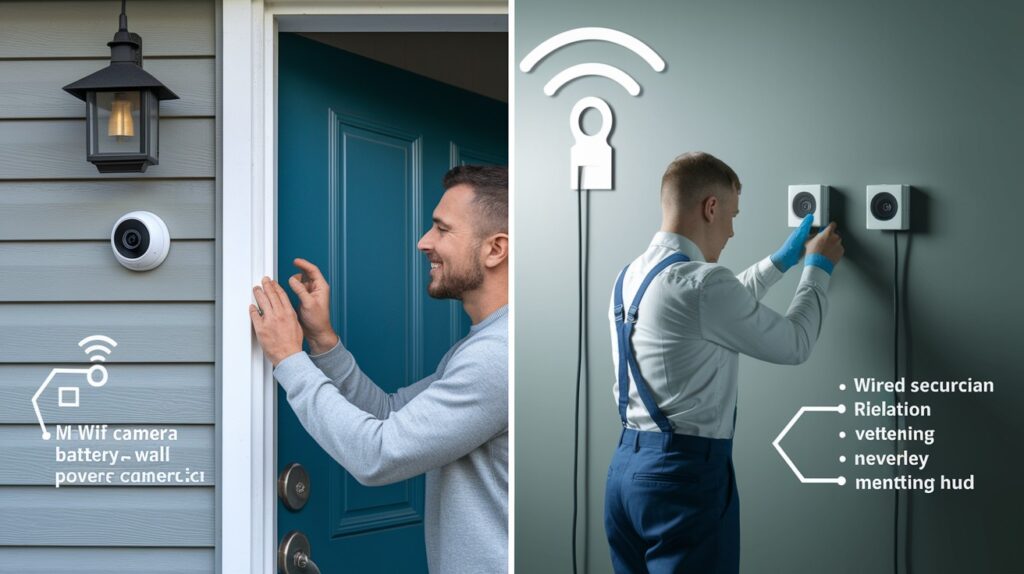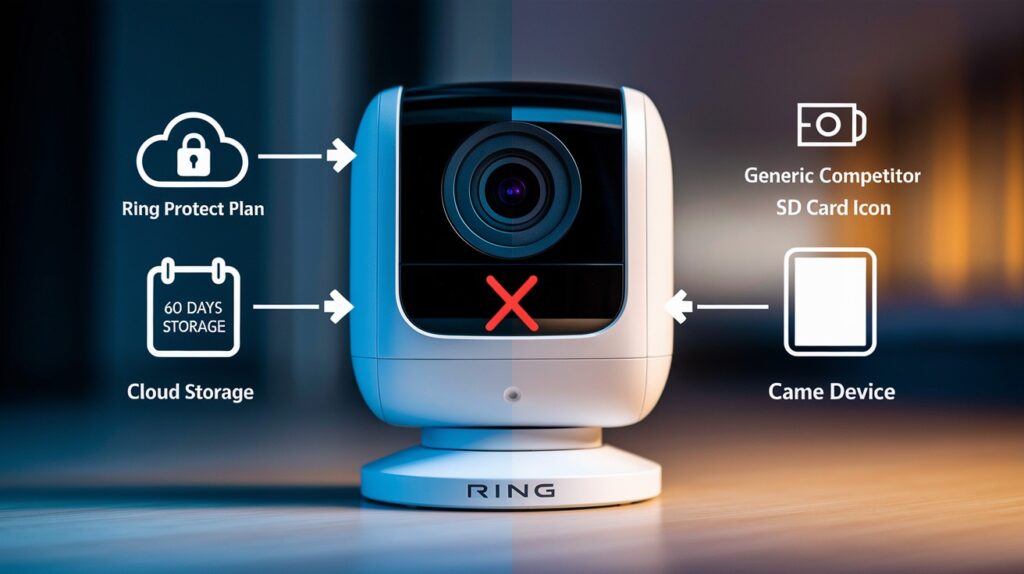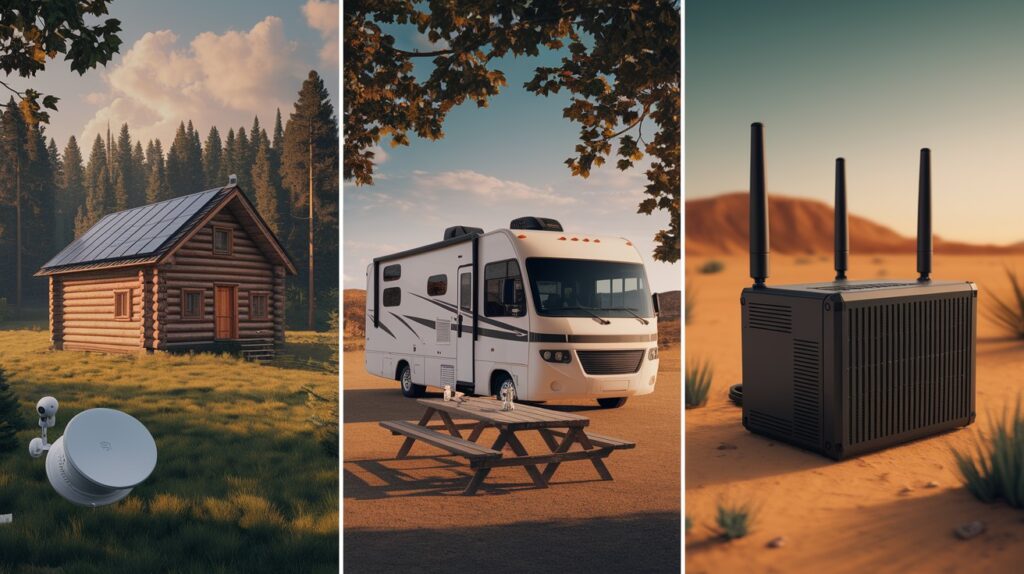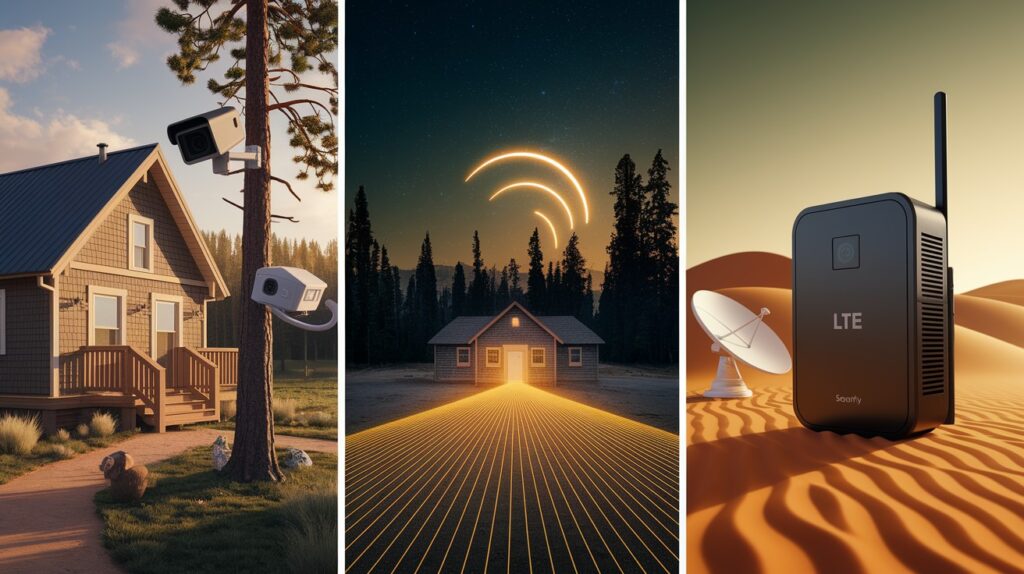Curious about using Ring cameras without a WiFi connection?
You’re not alone. Many homeowners wonder if their security devices can function during internet outages or in locations with limited connectivity.
Ring cameras have become popular home security options, but their reliance on internet connectivity raises questions about their effectiveness when WiFi isn’t available.
This guide examines what happens when your Ring camera loses its connection, exploring the limitations and possibilities of using these devices offline.
We’ll look at core technology, storage options, power considerations, and alternative setups that might work for your specific situation.
Let’s explore what Ring cameras can, and can’t, do when they’re not connected to the internet.
Why WiFi Matters for Smart Security Devices?
- WiFi enables immediate transmission of footage when motion is detected, allowing you to see events as they happen.
- Alert notifications are sent directly to your mobile device through internet connectivity, informing you of activity even when you’re away.
- Two-way communication requires active internet to transmit audio between your phone and the camera’s speakers/microphone.
- Video footage quality and transmission speed depend on your WiFi connection strength and bandwidth.
- Remote access to your camera settings, recorded footage, and live view is only possible through an internet connection.
Dependency on wireless networks vs wired alternatives

|
Feature |
WiFi-Based Systems (Ring) |
Wired Alternatives |
|
Installation |
Simple setup without running cables |
Requires professional installation with cables |
|
Reliability |
Subject to network outages and interference |
More stable connection not affected by WiFi issues |
|
Power Source |
Battery-powered or outlet-connected |
Typically hardwired to electrical system |
|
Vulnerability |
Can be affected by signal jammers or WiFi outages |
Less susceptible to wireless interference |
|
Expandability |
Easy to add additional cameras anywhere within WiFi range |
Limited by available wiring and port capacity |
|
Maintenance |
Requires periodic battery changes/charging (for battery models) |
Minimal maintenance once installed |
What Happens When WiFi Goes Down?
1. Functional limitations during internet outages
When WiFi connectivity fails, Ring cameras lose most of their smart capabilities. They cannot transmit video footage to the cloud or your devices. While the cameras may still detect motion and capture brief video clips, this data remains trapped on the device with nowhere to go. You won’t receive alerts, can’t view live feeds, and lose access to two-way communication features. Essentially, your sophisticated security system transforms into a basic camera that can see but can’t communicate what it sees.
2. Impact on various features
Video recording: Without WiFi, Ring cameras cannot upload footage to cloud storage. Some models may temporarily store limited recent motion events in their internal buffer memory, but this storage is minimal and not accessible until WiFi is restored. Once connectivity returns, only the footage captured while within this limited buffer might upload to the cloud-anything older is permanently lost.
Notifications: All alert notifications cease during WiFi outages. Your app won’t receive any signals about detected motion, doorbell rings, or potential security concerns. This creates a dangerous blind spot in your security system where events could occur without your knowledge, defeating a primary purpose of having smart security cameras.
Remote access: WiFi outages completely eliminate remote access capabilities. You cannot view live feeds, access recorded footage, or make any adjustments to camera settings through the Ring app. The physical distance between you and your property becomes a true separation, with no technological bridge until internet connectivity is restored.
Local Storage vs Cloud Storage: Is There an Offline Option?

Ring cameras primarily rely on cloud-based storage through Ring’s subscription plans.
When motion is detected, video footage is sent directly to Ring’s servers where it’s stored for later viewing. Without an active subscription, users can only view live footage but can’t access recordings of past events.
Ring offers two main subscription options: Ring Protect Basic (covering a single device) and Ring Protect Plus (covering all devices at one location).
Both plans provide cloud storage for 60 days of video history. Some newer Ring models feature limited pre-buffering that temporarily holds a few seconds of footage before motion activation, but this isn’t true local storage.
Unlike many competitors, Ring doesn’t offer built-in SD card slots or local storage options that would allow the cameras to function independently of cloud services.
Comparison with competitors that offer local storage
|
Feature |
Ring |
Wyze |
Eufy |
Arlo |
SimpliSafe |
|
Primary Storage Method |
Cloud only |
Cloud + microSD |
Local + optional cloud |
Cloud + optional USB |
Cloud only |
|
Offline Recording |
No |
Yes (with microSD) |
Yes (base station) |
Limited (with SmartHub) |
No |
|
Local Storage Capacity |
None |
Up to 256GB microSD |
16GB-128GB in base station |
USB storage in base station |
None |
|
Subscription Required for Recordings |
Yes |
No (basic features) |
No |
No (basic features) |
Yes |
|
Footage Accessible Without WiFi |
No |
Yes (with direct connection) |
Yes (through base station) |
Limited |
No |
|
Continuous Recording Option |
No |
Yes (with microSD) |
Yes |
With subscription |
No |
|
Data Privacy Advantage |
Low (cloud-dependent) |
Medium |
High (local storage) |
Medium |
Low (cloud-dependent) |
|
Cost for Local Storage |
N/A |
One-time SD card purchase |
Included in system |
One-time USB drive purchase |
N/A |
Battery and Power Supply Considerations
Power Status Without WiFi
- Ring cameras remain powered on during WiFi outages
- Battery models continue to hold their charge
- Hardwired models still receive electricity
- Motion sensors remain active and detect movement
- Cameras will “wake up” when motion is detected
Internal Memory Limitations
- Ring cameras have minimal internal buffer memory (not true storage)
- Buffer typically holds only seconds to minutes of recent footage
- No user-accessible local storage or SD card slot
- Memory serves as temporary holding space, not backup storage
- During brief WiFi interruptions, buffer may retain recent events
Can you use a Ring camera with a mobile hotspot or LTE router?
Yes, Ring cameras can connect to mobile hotspots and LTE routers as alternative internet sources.
These cameras don’t distinguish between traditional WiFi networks and cellular-based internet connections, they simply need any working internet connection with sufficient bandwidth.
Setting up a Ring camera with a mobile hotspot is straightforward:
- Enable your mobile hotspot or LTE router
- Use the Ring app to connect your camera to this network
- Enter the hotspot’s password when prompted
- Complete setup as you would with standard WiFi
This solution works well for temporary situations like power outages, vacation homes, or construction sites where traditional internet isn’t available.
Feasibility and performance analysis
Data consumption:
- Ring cameras use 2-4GB of data per camera monthly (with default settings)
- Higher resolution settings increase data usage significantly
- Motion frequency dramatically affects data consumption
- Most unlimited mobile plans throttle speeds after certain usage thresholds
Connection stability:
- Cellular connections typically have higher latency than broadband
- Video quality may automatically downgrade to maintain connection
- Remote areas may experience inconsistent signal strength
- Weather conditions can affect cellular reliability
Cost considerations:
- Dedicated data plans for security cameras cost $10-40 monthly
- Shared mobile plans may incur overage charges from video uploads
- Purpose-built LTE security routers offer more reliability but at higher cost
- Battery-powered hotspots require regular recharging
Practical limitations:
- Battery drain on mobile devices used as hotspots is substantial
- Multiple cameras quickly exceed most mobile data plans
- Live view features consume more data than standard recording
- Two-way audio features may experience more lag over cellular
For optimal performance, dedicated LTE security routers specifically designed for continuous operation offer better results than consumer mobile hotspots.
Practical Scenarios Where WiFi Isn’t Available

Cabins, remote properties, or RV use cases
Remote cabins and vacation properties often lack reliable internet infrastructure, making traditional Ring setups challenging.
Owners seeking to monitor these investments typically turn to cellular solutions like dedicated LTE security routers with external antennas.
RV owners face similar issues both while traveling and during storage periods. Many connect Ring cameras to campground WiFi when available or use mobile hotspots during transit.
For long-term RV storage, solar-powered Ring cameras with minimal data plans offer security without constant monitoring.
Creative solutions for low-connectivity environments

Some users create hybrid systems combining internet-connected Ring devices for critical areas with conventional trail cameras for broader coverage.
Mesh network extensions can bridge connectivity gaps between main buildings with internet and outbuildings without coverage.
In extremely remote locations, newer satellite internet services like Starlink provide viable options despite higher costs.
Solar-powered LTE security hubs offer completely independent solutions by combining renewable energy with cellular connectivity, functioning indefinitely without infrastructure in sunny locations and sending alerts only when necessary.
Conclusion
So, do Ring cameras work without WiFi?
The short answer is no, not in any meaningful way. While Ring devices physically power on without internet, they lose their core functions: recording accessible footage, sending alerts, and enabling remote viewing.
For most users with stable internet, this limitation rarely matters.
However, if you own property in remote areas or face frequent connectivity issues, you’ll need creative solutions like mobile hotspots, LTE routers, or possibly an entirely different security system with local storage.
Before investing in Ring, consider your connectivity situation carefully. For locations with reliable internet, Ring offers excellent smart features and convenience.
For off-grid or spotty-connection scenarios, you might be better served by cameras designed specifically for offline use.
FAQs
Will my Ring camera record footage during WiFi outages?
No. Ring cameras can’t save accessible recordings without WiFi. They might briefly buffer footage but it’s lost without connectivity.
Can I use a Ring camera at my cabin without internet?
Not effectively. Consider using a dedicated LTE router or choosing a different camera system with local storage capabilities.
Do battery-powered Ring cameras still use battery when WiFi is down?
Yes, but less power is consumed since they’re not transmitting data. The motion sensors remain active during outages.








